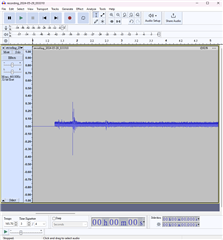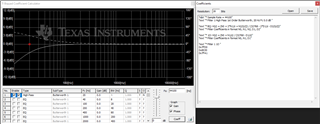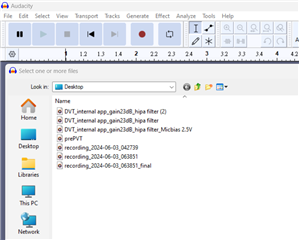Tool/software:
what kind of factors could be caused by DC offset on the recording audio?

This thread has been locked.
If you have a related question, please click the "Ask a related question" button in the top right corner. The newly created question will be automatically linked to this question.
Tool/software:
what kind of factors could be caused by DC offset on the recording audio?

Hi Hill,
If you are recording DC offset then there is likely a high pass filter missing in the chain or there is error in the biasing point of the ADC versus where the signal is biased to. If it is an issue you will need to share more details about the circuit set up and how you are recording the data.
Best regards,
Jeff McPherson
Hi Jeff,
Thank you for your reply. Here are more details:
1. For the circuit set, our MIC bias is powered by an external LDO at 3.3V, and it's also connected to the codec AVDD power supply.
2. The AC-coupling capacitor uses 0.1uF, and the input level control is set at 0dB. This results in a high-pass filter pole of 80 Hz. I've tried using a 0.2uF AC-coupling capacitor, which lowered the high-pass filter pole to almost 40Hz, but it also introduced a DC offset.
3.We use a recording app developed for the Android system. This app allows us to convert a . PCM file to a . WAV file directly. Then, we use the Audacity app to analyze it.
if need more information about it please just let me know so I can ask to our software
thanks



Hi Hill,
Have you enabled the high pass filter within the device signal chain?
Thank you,
Jeff McPherson
Hi Hill,
Section 10.3.3.2.1 describes details of how to set and configure the high pass filter on the ADC chain.
Best regards,
Jeff McPherson
Hi Hill,
Your DC offset looked small which is quite normal. In the real world, unmatched coupling caps, non linearities, and other non-ideal situations can cause DC offset in the recording. That's why the high pass filter is there, to help remove those things. I don't see anything wrong in the schematic.
Best regards,
Jeff McPherson
Hi Jeff,
Thank you for your help in explaining DC offset, I now have a good understanding of it.
However, I have additional questions about setting the high-pass filter formula:

For this formula, what does "z-1" mean and where can I find its figures?
Hi HIll,
The formula is given in the Z domain. This is like the frequency domain for discrete signals (digital audio is a discrete signal).
TI has a tool to help you generate the coefficients without doing math in the z domain: www.ti.com/.../01.00.00.0A

Best regards,
Jeff McPherson
Hi Hill,
That is not gain. That is the -3dB point of the filter, meaning the cut off frequency. The gain of the filter should be 0dB in the passband.
If you want to apply a flat -6dB gain you should use either the PGA or digital volume controls.
Best regards,
Jeff McPherson
Hi Hill,
You should try the other options of the high pass filter. Also how are you connected to audacity?
Best regards,
Jeff McPherson
Hi Jeff,
Thank you for your advice. I've tried the other options for the high pass filter as you suggested. I enabled the high filter by writing to page 0, register 12, then selected the programmed coefficients by writing to page 0, register 107, and used the default values.
To review the results, I utilized Audacity as a tool to open the .wav file I recorded from our device.

Hi Hill,
Did using the other options help the DC offset? If you're using default coefficients, there's no need to select "programmed coefficients" in register 107. The preprogrammed options in register 12 should be enough. If the issue persists, how is the .wav file being recorded?
Another check you can do is measure the analog signal input for any DC offset. If it is not present in the analog input, it is incredibly unlikely it is being generated from the device. It is more likely to be a recording issue in that case.
Best regards,
Jeff McPherson
Hi Jeff,
1. I've measured pin 10, which we've set as signal end input, and it's at 1.35V. Is this normal? Also, based on your suggestion, I understand that I can check other inputs like pin11, pin12, pin13, pin14, and pin16 for any DC offset, correct?
2. We use a recording app developed for the Android system. This app lets us directly convert a . PCM file to a . WAV file. have any information I need to provide like convert format?

Hi Hill,
The 1.35V offset is normal. Have you ruled out that the .PCM to .WAV file conversion is not introducing an offset?
If you give me your I2C configuration script (not a register map, a sequence of I2C writes) I can try it on my EVM and see if I measure any offset. I can measure the PCM data directly.
Best regards,
Jeff McPherson